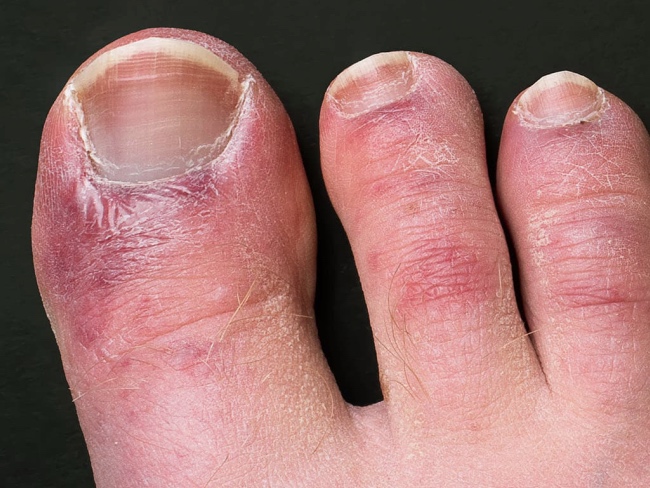What is Aaron Rodgers’ injury? Packers QB clears up confusion about COVID toe
Aaron Rodgers was able to get over his bout with COVID relatively quickly. The Packers’ unvaccinated quarterback missed 10 days of action but was only out for one game against the Chiefs.
How did he feel after his first game back against the Vikings? Pretty good overall, he said on “The Pat McAfee Show,” but there is one small problem.
What causes COVID toes?
We’ve seen a phenomenon called “COVID toes” in people diagnosed with COVID-19, but we didn’t know much about what caused it, until now.
Aaron Rodgers makes it clear he doesn’t have COVID toe, says he suffered fracture during quarantine
Rodgers is still set to suit up this week
Aaron Rodgers left the Packers’ Week 11 loss to the Vikings with a “very, very painful toe injury,” and now we have a diagnosis for the ailment from the best source of all … Rodgers himself.
The group went on to crack a number of jokes about Rodgers injuring his toe during MMA workouts with Joe Rogan and doing the “hokey pokey” during his COVID-19 absence.
What Are COVID Toes?
You probably know that COVID-19 can bring on symptoms like a cough, fever, fatigue, and shortness of breath. Could it also be linked to swollen and discolored toes?

Some medical groups and researchers say it can, and the condition has been dubbed “COVID toes.” Other scientists say early research suggests that there isn’t a connection between the coronavirus and this skin problem.
What Causes COVID Toes?
That’s unclear for now. These skin changes have shown up in people who’ve tested negative for COVID, and in people who’ve tested positive for the coronavirus.
One small study, which suggests there’s a close relationship between COVID toes and COVID-19, says that the toe condition might stem from your immune system mounting “a strong antiviral” response to the coronavirus.
What Are the Symptoms of COVID Toes?
The skin on one or more of your toes or fingers may swell up and look bright red, then gradually turn purple. Skin of color can look swollen and purple, and brownish-purple spots may appear.































